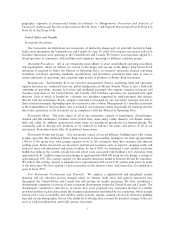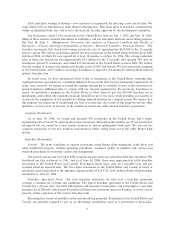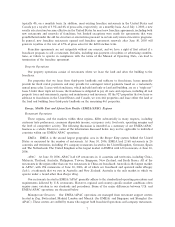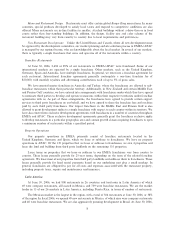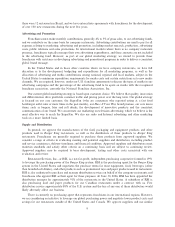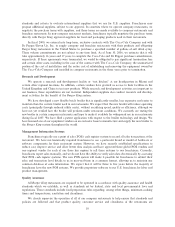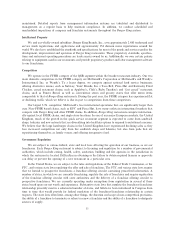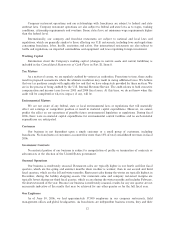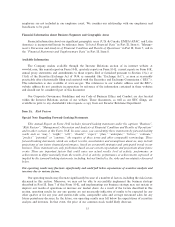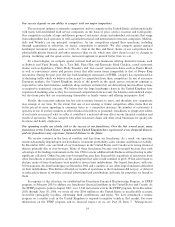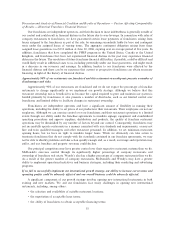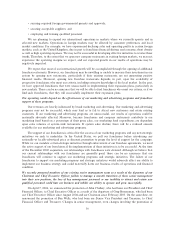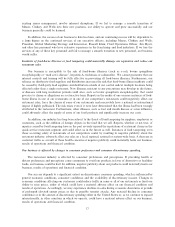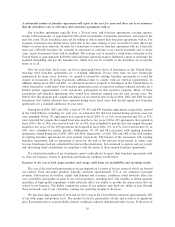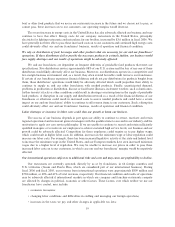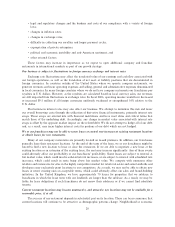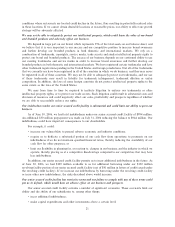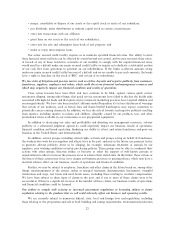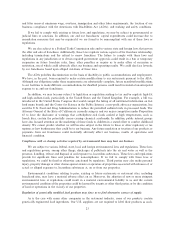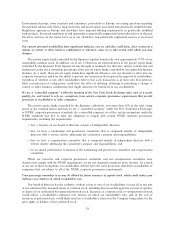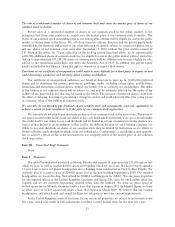Burger King 2006 Annual Report Download - page 27
Download and view the complete annual report
Please find page 27 of the 2006 Burger King annual report below. You can navigate through the pages in the report by either clicking on the pages listed below, or by using the keyword search tool below to find specific information within the annual report.Discussion and Analysis of Financial Condition and Results of Operations Ì Factors Affecting Comparability
of Results Ì Historical Franchisee Financial Distress.''
Our franchisees are independent operators, and their decision to incur indebtedness is generally outside of
our control and could result in financial distress in the future due to over-leverage. In connection with sales of
company restaurants to franchisees, we have guaranteed certain lease payments of franchisees arising from
leases assigned to the franchisees as part of the sale, by remaining secondarily liable for base and contingent
rents under the assigned leases of varying terms. The aggregate contingent obligation arising from these
assigned lease guarantees was $112 million at June 30, 2006, expiring over an average period of five years. In
addition, franchisees that have completed the FFRP program in the United States, Canada or the United
Kingdom, and franchisees that have not experienced financial distress in the past may experience financial
distress in the future. The resolution of future franchisee financial difficulties, if possible, could be difficult and
would likely result in additional costs to us, including potentially under our lease guarantees, and might result
in a decrease in our revenues and earnings. In addition, lenders to our franchisees were affected by the
financial distress and there can be no assurance that current or prospective franchisees can obtain necessary
financing in light of the history of financial distress.
Approximately 90% of our restaurants are franchised and this restaurant ownership mix presents a number of
disadvantages and risks.
Approximately 90% of our restaurants are franchised and we do not expect the percentage of franchise
restaurants to change significantly as we implement our growth strategy. Although we believe that this
restaurant ownership mix is beneficial to us because the capital required to grow and maintain our system is
funded primarily by franchisees, it also presents a number of drawbacks, such as our limited control over
franchisees and limited ability to facilitate changes in restaurant ownership.
Franchisees are independent operators and have a significant amount of flexibility in running their
operations, including the ability to set prices of our products in their restaurants. Their employees are not our
employees. Although we can exercise control over our franchisees and their restaurant operations to a limited
extent through our ability under the franchise agreements to mandate signage, equipment and standardized
operating procedures and approve suppliers, distributors and products, the quality of franchise restaurant
operations may be diminished by any number of factors beyond our control. Consequently, franchisees may
not successfully operate restaurants in a manner consistent with our standards and requirements, or may not
hire and train qualified managers and other restaurant personnel. In addition, we set minimum restaurant
opening hours, but we have no right to mandate longer hours. While we ultimately can take action to
terminate franchisees that do not comply with the standards contained in our franchise agreements, we may
not be able to identify problems and take action quickly enough and, as a result, our image and reputation may
suffer, and our franchise and property revenues could decline.
Our principal competitors may have greater control over their respective restaurant systems than we do.
McDonald's exercises control through its significantly higher percentage of company restaurants and
ownership of franchisee real estate. Wendy's also has a higher percentage of company restaurants than we do.
As a result of the greater number of company restaurants, McDonald's and Wendy's may have a greater
ability to implement operational initiatives and business strategies, including their marketing and advertising
programs.
If we fail to successfully implement our international growth strategy, our ability to increase our revenues and
operating profits could be adversely affected and our overall business could be adversely affected.
A significant component of our growth strategy involves opening new international restaurants in both
existing and new markets. We and our franchisees face many challenges in opening new international
restaurants, including, among others:
‚ the selection and availability of suitable restaurant locations;
‚ the negotiation of acceptable lease terms;
‚ the ability of franchisees to obtain acceptable financing terms;
15


